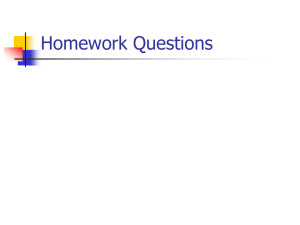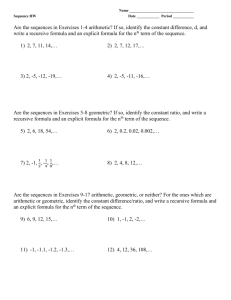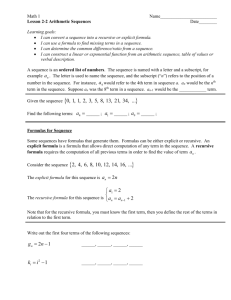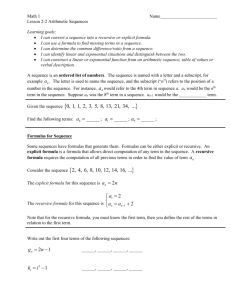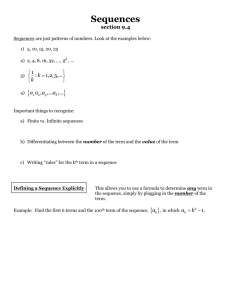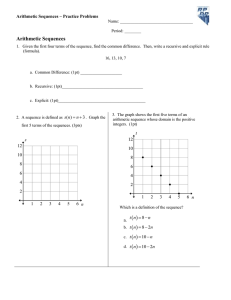8.1 Sequences
advertisement
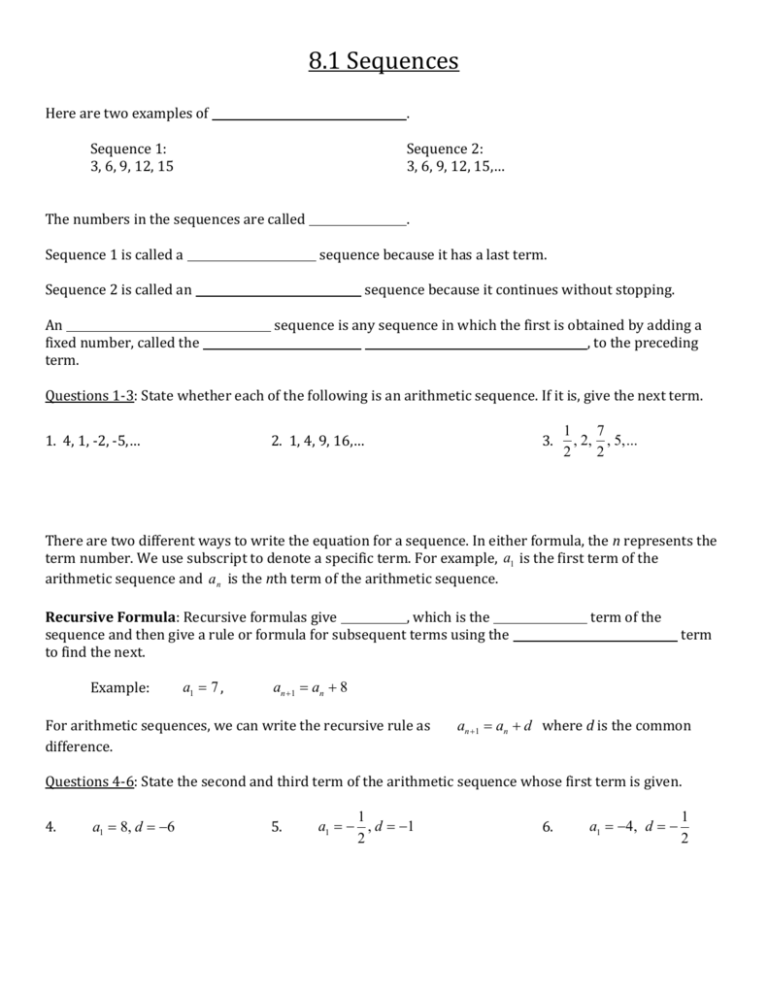
8.1 Sequences Here are two examples of . Sequence 1: 3, 6, 9, 12, 15 Sequence 2: 3, 6, 9, 12, 15,… The numbers in the sequences are called Sequence 1 is called a . sequence because it has a last term. Sequence 2 is called an An fixed number, called the term. sequence because it continues without stopping. sequence is any sequence in which the first is obtained by adding a , to the preceding Questions 1-3: State whether each of the following is an arithmetic sequence. If it is, give the next term. 1. 4, 1, -2, -5,… 2. 1, 4, 9, 16,… 3. 1 7 , 2, , 5,... 2 2 There are two different ways to write the equation for a sequence. In either formula, the n represents the term number. We use subscript to denote a specific term. For example, a1 is the first term of the arithmetic sequence and a n is the nth term of the arithmetic sequence. Recursive Formula: Recursive formulas give , which is the sequence and then give a rule or formula for subsequent terms using the to find the next. Example: a1 7 , term of the term an 1 an 8 For arithmetic sequences, we can write the recursive rule as difference. an1 an d where d is the common Questions 4-6: State the second and third term of the arithmetic sequence whose first term is given. 4. a1 8, d 6 5. 1 a1 , d 1 2 6. a1 4, d 1 2 Questions 7-8: State the first four terms of the sequence. If it is arithmetic, give the common difference. 7. a1 6, an1 3an 4 8. a1 12, an 1 4 an 10. 6, 12, 24, 48,… Questions 9-10: Specify each sequence recursively. 9. 13, 7, 1, -5,… Explicit Formula: A sequence can be specified by giving the value of any term as a function of its in the sequence, n. Example: an 3 2 n We will learn rules for explicit formulas for specific types of sequences in future lessons. Questions 11-12: State the first four terms of the sequence. If the sequence is arithmetic, give the common difference. 11. an 3n 1 12. an 3 2 n1 14. 1, 4, 9, 16,… Questions 13-14: Specify each rule explicitly. 13. 2, 6, 10, 14,…


